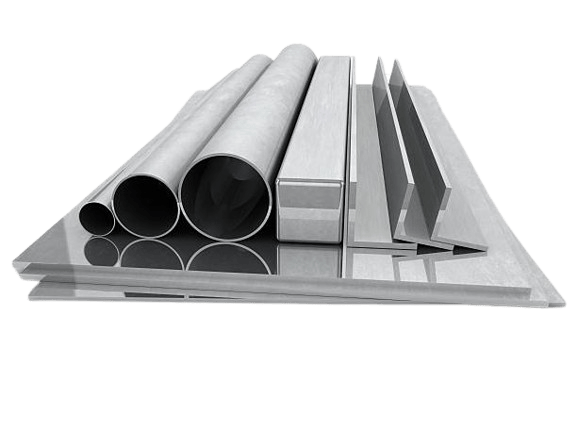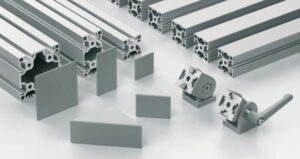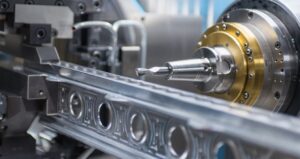Selecting the right aluminum curtain wall profile entails considering the diverse types of profiles available for various curtain wall designs. To ensure you choose the most appropriate profile for your curtain wall, a comprehensive guideline is essential. This guideline will aid you in navigating the array of options and selecting the profile that best aligns with the specific requirements of your project, ultimately contributing to the success and functionality of your curtain wall system.
Considerations Of Choosing Aluminum Curtain Wall Profile

When selecting an aluminum curtain wall profile, three crucial considerations include the aluminum grade, profile shape, and compatibility with the curtain wall structure:
Aluminum Grade: Choose the appropriate grade of aluminum based on factors such as strength, corrosion resistance, and cost-effectiveness to suit the application and environmental conditions.
Profile Shape: Select a profile shape that complements the design aesthetic, structural requirements, and performance specifications of the curtain wall system.
Curtain Wall Structure Compatibility: Ensure that the chosen aluminum profile integrates seamlessly with the overall curtain wall structure, supporting the desired functionality, aesthetics, and performance of the building facade.
Aluminum Grade Of Curtain Wall Profile

The 6000 series aluminum is a versatile option commonly used in various architectural applications, including curtain wall parts. This series offers a balance of strength, formability, and corrosion resistance, making it suitable for different types of curtain wall systems such as unitized, stick-built, and structurally glazed configurations.
6005 Aluminum Curtain Wall Profile
6005 aluminum, in both T5 and T6 temper conditions, stands out for its balance of strength and formability. The T6 curtain wall parts, with its heightened strength levels, is particularly well-suited for unitized systems that require robustness to withstand structural demands efficiently. This grade’s versatility makes it a reliable choice for various curtain wall applications where both strength and formability are essential.
6060 Aluminum Curtain Wall Profile
6060 aluminum, available in T5 and T6 tempers, is prized for its exceptional extrudability and surface finish. These qualities make it a preferred option for crafting visually striking curtain wall profiles, especially in stick-built systems where design aesthetics play a significant role. The T6 temper variant of 6060 aluminum further enhances its strength characteristics, making it an excellent choice for curtain walls that demand not only aesthetic appeal but also structural integrity, such as in unitized systems.
6061 Aluminum Curtain Wall Profile
6061 aluminum, offered in T4 and T6 tempers, is renowned for its good formability and weldability. The T4 profiles’s flexibility makes it suitable for curtain wall parts with intricate shapes commonly found in both unitized and stick-built systems. On the other hand, the T6 temper of 6061 aluminum shines with its high strength and corrosion resistance, making it a top pick for structurally demanding curtain wall profiles, especially in unitized systems where durability and performance are paramount.
6063 Aluminum Curtain Wall Profile
6063 aluminum, available in T5 and T6 tempers, boasts exceptional extrudability and surface finish. This grade is frequently chosen for crafting aesthetically appealing curtain wall profiles in stick-built systems where visual appeal is a key consideration. The T6 temper of 6063 aluminum elevates its strength properties, making it an excellent option for curtain walls requiring enhanced structural performance, particularly in unitized systems where strength and aesthetics converge to create a durable and visually pleasing building facade.
Aluminum Curtain Wall Profile Shape

The shape of aluminum curtain wall profiles significantly impacts their structural integrity and aesthetic appeal. With a variety of shapes available, such as U-profiles, T-profiles, and L-profiles, each offers unique advantages. U-profiles are known for their strength and stability, making them suitable for providing robust support within curtain wall systems. T-profiles excel in load-bearing applications, offering enhanced strength for structures that require additional support. Meanwhile, L-profiles are commonly utilized as support members, facilitating connections between different sections and reinforcing joints. By selecting the appropriate profile shape based on the specific requirements of the project, architects and designers can ensure both the structural reliability and visual appeal of their aluminum curtain wall systems.
Ralated Products
How To Ensure Curtain Wall Structure Compatibility?

Ensuring compatibility in an aluminum curtain wall structure involves a series of steps to guarantee that all components work harmoniously together. Here’s how you can ensure compatibility:
1. Design Coordination:
Ensure that the design of the aluminum curtain wall system aligns with the architectural and structural requirements of the building. Coordinate with architects, engineers, and contractors to integrate the curtain wall seamlessly into the overall design.
2. Material Selection:
Choose aluminum profiles, fasteners, glazing, sealants, and other components that are compatible with each other in terms of material composition and performance characteristics. Consider factors such as thermal expansion rates and corrosion resistance.
3. System Integration:
Verify that all curtain wall parts, including aluminum profiles, glass panels, insulation, and accessories, are designed to work together effectively. Ensure that the connections and interfaces between components are well-engineered for compatibility.
4. Testing and Certification:
Conduct performance tests on the aluminum curtain wall system to verify its structural integrity, weather resistance, and thermal performance. Ensure that the system meets relevant industry standards and certifications.









